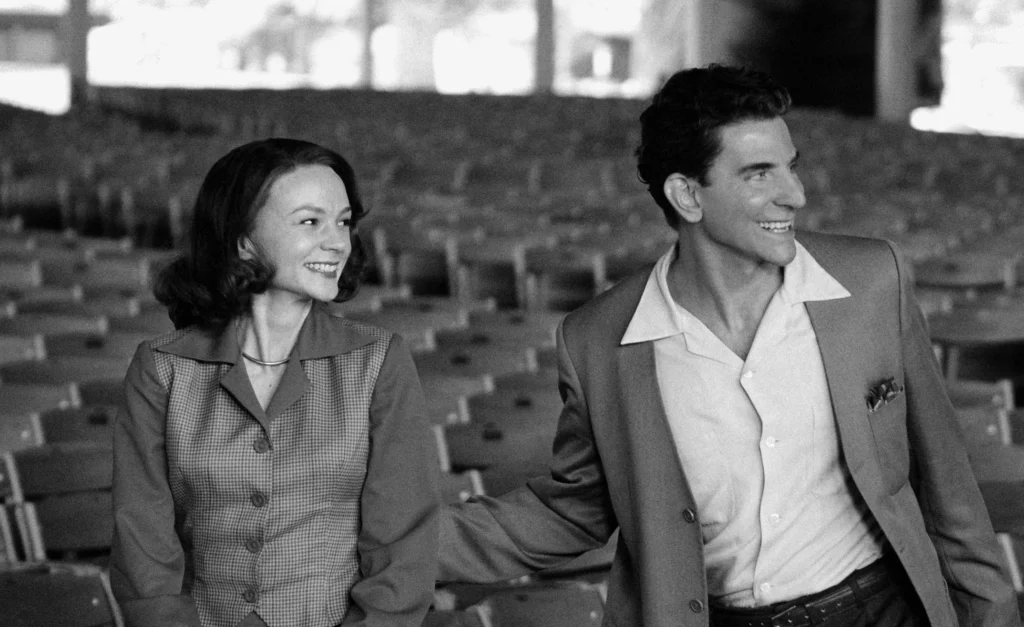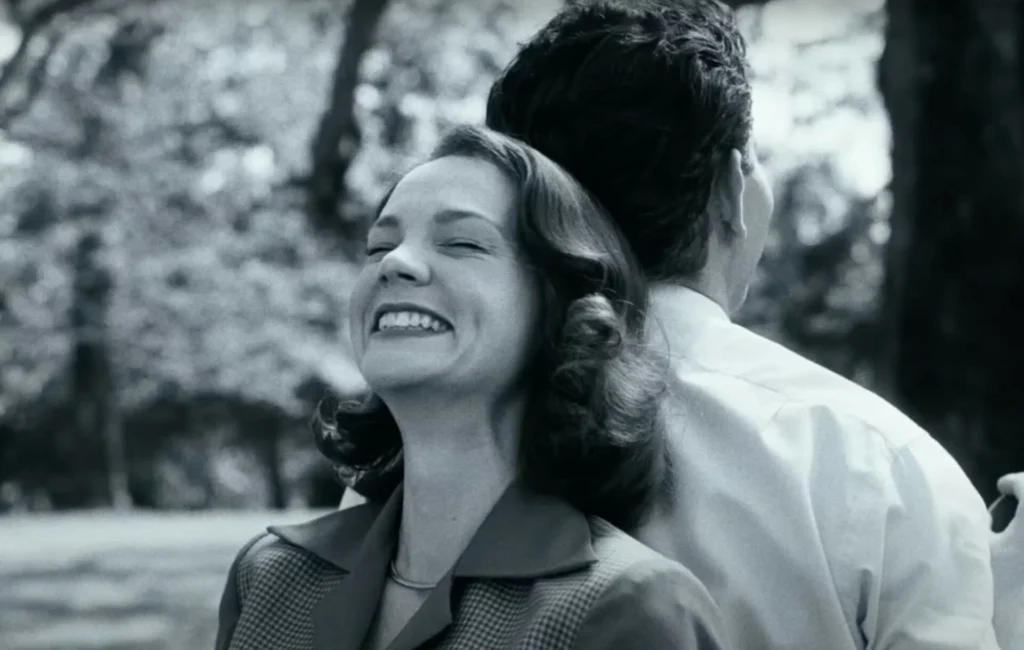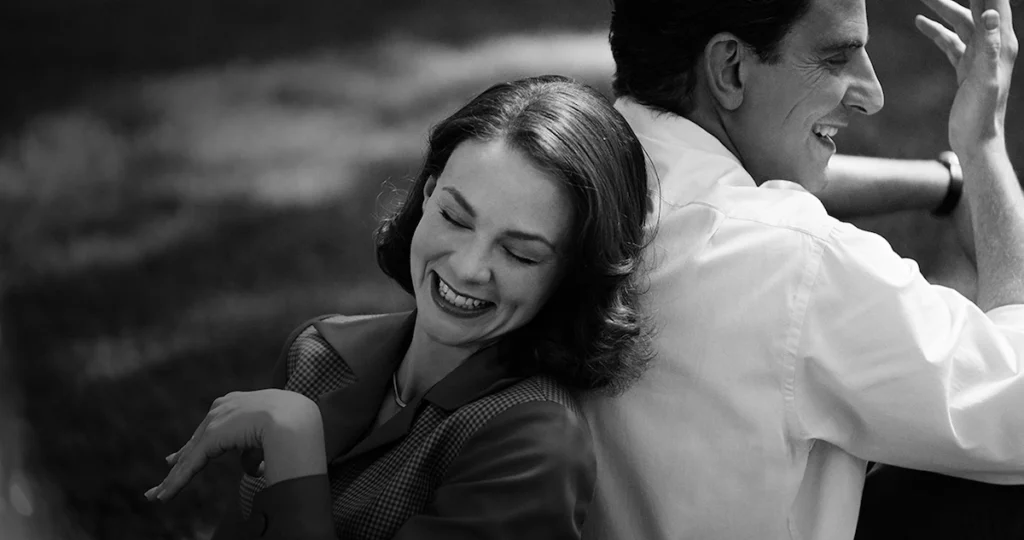Maestro at Leonard Bernstein’s Real Home
In pursuit of high art, Bradley Cooper’s biography uncovers the numerous tensions of Leonard Bernstein’s life. Here’s what’s true and what’s fiction.

Leonard Bernstein, possibly America’s best-known midcentury conductor, is having a moment. He was described to as the mentor/role model motivating the would-be conductor in last year’s Tár, and now with Maestro, he has his own biography directed, co-written (with Josh Singer), and starring Bradley Cooper.
The film begins with a quote from Leonard Bernstein: “A work of art does not answer questions, it provokes them, and its essential meaning is in the tension between contradictory answers.” The fundamental conflict Maestro is interested in examining is the one that exists between Bernstein’s loving and committed marriage to actress Felicia Montealegre (which resulted in three children to whom he was devoted) and his complex sexual identity, which includes encounters with numerous men. Maestro
A further conflict exists between Bernstein the conductor, who likes public adulation and is a self-described people person, and Bernstein the composer, who needs isolation to write. Finally, there is a schism between Bernstein, the composer of acclaimed musicals such as West Side Story, and Bernstein, who regards this work as lightweight and believes he should be devoting himself to serious symphonic works (though his efforts in this area have received less acclaim).
“Why would you want to give this up?” Felicia asks after witnessing a fantastic rehearsal of the ballet Fancy Free (which served as the inspiration for the musical fantastic Town and its film adaption On the Town).
Cooper avoids many of the conventional biopic cliches by focusing solely on the marital bond. Anyone interested in Bernstein’s or Montealegre’s histories should pay special attention to a scenario in which they withdraw to a quiet room at a party and recite each other’s minibios at breakneck speed. The two get engaged, and four years later we’re in the family apartment, with the actual Edward R.
Murrow on the soundtrack, outlining Lenny’s career accomplishments as part of an introduction for a television interview. The same method is later utilized when a journalist recounts Bernstein’s later résumé to him as part of a pitch to write a biography. Maestro
The portrayal of numerous notables who appear in the story is similarly indirect, with them generally presented on a “if you know, you know” basis rather than being identified. Betty Comden and Adolph Green, the team that worked with Bernstein on Wonderful Town, are shown giving a clip of song and gurning crazily at a party, causing viewers unfamiliar with musical theater to wonder who these two loons are.
Jerome Robbins, Bernstein’s colleague on West Side Story and Fancy Free, is mentioned by name and even gets to dance (superbly, by Michael Urie), but if you didn’t know who he was coming in, you won’t find out here.
Similarly, a bespectacled, rather geeky guy, at one point addressed as “Aaron,” plays a duet with young Lenny and is clearly an old buddy, placing a soothing hand on Bernstein’s shoulder during a family picnic. Aaron Copland (Brian Klugman) is the celebrated composer of Fanfare for the Common Man and ballets such as Rodeo.
While this saves tedious exposition such, “Hey, Aaron, congratulations on winning a Pulitzer Prize for ‘Appalachian Spring!’,” it does leave the viewer unaware of how important Copland was in Bernstein’s life, as New Yorker reviewer Alex Ross pointed out. He first met Copland when a Harvard student, though he remarked, “I had long adored him through his music.” Bernstein also mentioned Copland. Maestro
While Bernstein was at Harvard, the two had an on-again, off-again relationship, but the film never mentions if Felicia was aware of this or if it changed her thoughts about Copland being there at family events.
Many of the scenes depict conversations known only to the participants and are thus difficult to verify—although Singer has stated that he drew on some 1,800 letters donated to the Leonard Bernstein Collection at the Library of Congress after the composer’s death in 1990 and which were finally unsealed in 2010. Nonetheless, in Maestro, we strive to distinguish between what is score and what is improvisation. Maestro
Did Leonard Bernstein leave as an understudy and return as a star?
In the film, young Lenny, then an assistant conductor with the New York Philharmonic, receives a phone call early in the morning from his apartment above Carnegie Hall: the regular conductor is ill, and Lenny would have to command the orchestra without rehearsal during that afternoon’s performance. He joyfully smacks his lover’s buttocks, dresses, and dashes down to the concert hall and onto the stage. The unknown young conductor becomes a big hit, and his career takes off. Maestro

This is roughly what transpired, albeit Bernstein was not as unprepared as the video implies. His responsibility as an assistant conductor was to be familiar with the current season’s scores in case he needed to go on suddenly. Even though the orchestra wasn’t available for a rehearsal, Bernstein had time to teach the orchestra’s customary conductor, the flu-stricken Bruno Walter.
“I found Mr. Walter sitting up but wrapped in blankets, and he obligingly showed me just how he did it,” he told the New York Times, which featured the drama on its front page. On the other hand, Bernstein was not only conducting without a rehearsal, but it was his first time ever conducting the Philharmonic. Maestro
What Happened to the Schnoz?
For those who haven’t been on the internet in the last six months, the early publicity stills for the picture showed Bradley Cooper as Bernstein with a pretty huge prosthetic nose, which some thought was stereotypically Jewish and a caricature.

The nose is almost the same size as Bernstein’s genuine nose. The issue is that Bernstein had a different shaped face and, to be slightly editorial, was actually better-looking as a young man than Cooper (despite lacking the actor’s strapping build), so his nose did not look out of proportion as it does on Cooper. The nose, oddly, does not loom as prominent until Cooper begins playing the older Bernstein, probably because the ageing makeup balances it out. Maestro
Were the Bernsteins Really That Dedicated to Each Other?
As Felicia (Carey Mulligan) and Lenny get to know each other more, it becomes evident that they adore each other and are soul mates. He joyfully brings her to his friends, and she suggests marriage, saying, “I am willing to accept you as you are, without being a martyr.” Let’s see what happens if you’re free to do whatever you want, but without remorse or confession.” All she asks is that he remain discreet and not cause her any embarrassment. When Lenny becomes “sloppy” in middle age, carrying on with a young man in public, Felicia kicks him out and they split up. Maestro
The broad strokes of the connection and the contract it implied are correct. Bernstein, in reality, proposed to Montealegre (on a trip to Costa Rica). If he wasn’t overcome by passion, it appears he sincerely loved her, as evidenced by a letter to his sister, Shirley, included in The Leonard Bernstein Letters.
“How strange that you have written to me just now of Felicia!” he stated in his note. “She has occupied my thoughts incessantly since I left America, and I have come to a fabulously clear realization of what she means—and has always meant—to me.” I have loved her since the beginning, despite all the impediments that have continually hampered my loving-mechanism. My mind were racing as I sat alone on the water. Maestro
Felicia, on her part, wrote to her new husband shortly after their marriage, “You are a homosexual and may never change—you don’t admit to the possibility of a double life, but if your peace of mind, your health, your entire nervous system depends on a certain sexual pattern, what can you do?” I am willing to accept you as you are, without becoming a martyr or sacrificing myself on the altar of L.B.
(I happen to adore you—this may be an illness, and what better cure?)… The feelings you have for me will be clearer and easier to express—our marriage is built on sensitivity and mutual respect, not desire. Maestro
Was Lenny Really That Unconcerned About His Sexual Orientation?
Lenny appears to accept himself completely as he is in the film, saying, “The world wants us to be only one thing, and I find that deplorable.”

It seemed implausible that a good Jewish boy in the 1950s would have had no issues with his sexual preferences. Being gay or bi was not an uncommon occurrence in the circles in which Bernstein frequented. In the LGBT subculture, the American League of League was dubbed “the Homitern.” “They all went to bed with each other, but it was very casual,” a friend of the conductor named Antonio de Almeida told Bernstein biographer Meryle Secrest. “It’s like a Turkish bath. Maestro
But Bernstein was bothered enough by his tastes to consult with numerous psychoanalysts (visiting a psychotherapist was nearly de rigueur for wealthy Manhattanites in the 1950s). Both he and his former partner David Oppenheim (the man in the bed when Lenny gets his big break), who had been married three times and fathered multiple children, were patients of a therapist named Marketa Morris, whom they referred to as “the Frau” in their correspondence. Maestro
Bernstein also saw Sandor Rado, an analyst who specialized in “curing” homosexual males. According to Secrest, Bernstein informed a friend that “he had always been very adaptable when it came to sex, but he had decided that homosexuality was a curse.” He was tense and adamant about it. He believed that marriage had delivered him from a homosexual existence.”
In fact, the Bernstein-Montealegre marriage can be compared to Oscar Wilde and his wife, Constance, who was aware of her brilliant husband’s dalliances with young men but remained devoted to him, while he, like Bernstein, made her and their children the center of his emotional world. Maestro


2 thoughts on “What is true and what is fiction in Maestro?”